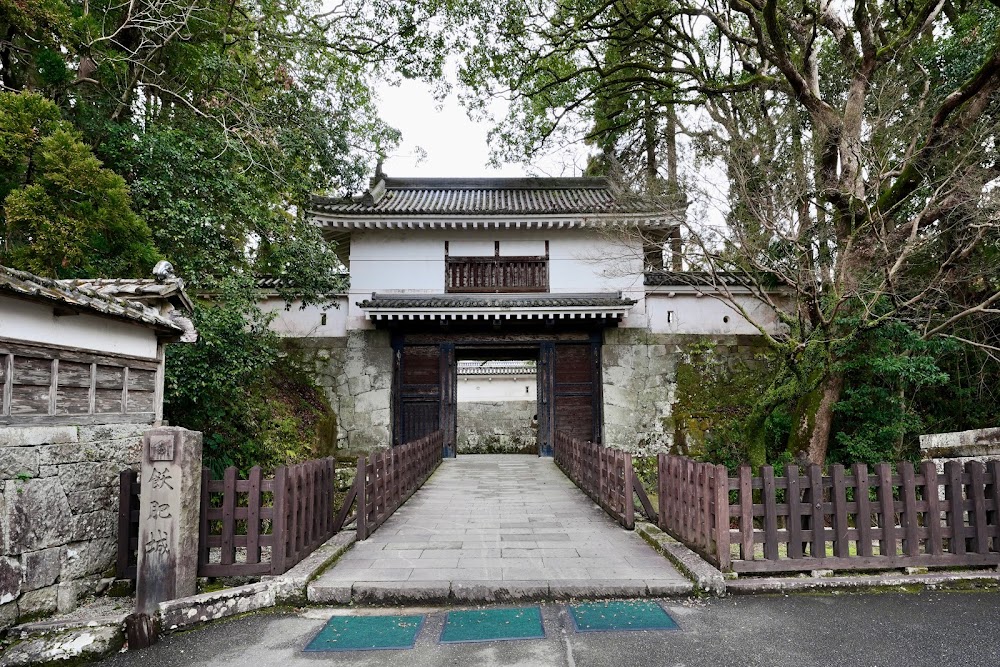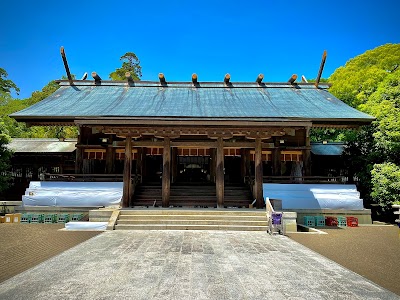Kirishima Shrine (霧島神宮)
Related Places
Overview
Kirishima Jingu is a sanctified Shinto shrine nestled in the verdant mountains of Kirishima, in Miyazaki Prefecture, Japan. This remarkable shrine is dedicated to Ninigi-no-Mikoto, the grandson of the sun goddess Amaterasu, a pivotal figure in Japanese mythology. With its origins steeped in legend and spirituality, Kirishima Jingu offers a captivating glimpse into Japan's rich historical tapestry.
Originally established in the 6th century, Kirishima Jingu was built to honor Ninigi-no-Mikoto, who is said to have descended to Earth on Mount Takachiho within the Kirishima mountain range. This descent is a crucial event in mythology, linking the divine to the Japanese imperial family. According to legend, Ninigi-no-Mikoto was dispatched by the gods to bring order and cultivate the land, thereby forging a vital connection between the heavenly realm and the earthly world.
Over the centuries, the shrine has faced numerous challenges, including natural disasters like volcanic eruptions that necessitated its relocation. A significant move occurred in the 15th century when the shrine was transferred to its current location to escape the frequent eruptions of Mount Kirishima. This decision was made to preserve the sanctity and structural integrity of the shrine.
The architectural evolution of Kirishima Jingu reflects both aesthetic beauty and sacred purpose. During the Edo period in the early 18th century, the shrine underwent substantial renovations under the auspices of the powerful Satsuma clan. They rebuilt the main hall, or Honden, along with other structures, highlighting a majestic architectural style that embodies reverence for the deities.
In 1715, an elaborate Torii gate was constructed, marking the entrance and welcoming visitors into this sacred space. The main hall, adorned with intricate woodwork and painted in vibrant hues of red and gold, captures the grandeur and devotion of the era. The carvings and motifs often depict mythical creatures and sacred symbols, enhancing the shrine's spiritual ambiance.
Kirishima Jingu is also known for hosting several festivals and rituals throughout the year. One of the most notable is the annual fire festival, which commemorates Ninigi-no-Mikoto's descent. This event features lively parades, traditional music, and dance, drawing both locals and tourists to engage in the vibrant yet solemn festivities.
Surrounding the shrine is a serene landscape of ancient cedar trees and peaceful walking trails, inviting visitors to reflect and connect with nature. The dense forest creates a tranquil atmosphere that beautifully contrasts with the vibrant shrine structures. This harmonious blend of natural beauty and sacred architecture has made Kirishima Jingu a cherished destination for both pilgrimage and tourism.
While deeply rooted in history, Kirishima Jingu remains a living sanctuary where ancient traditions and contemporary practices coexist. It stands as a testament to the enduring legacy of Japanese culture and spirituality, embodying the timeless connection between the divine and the natural world.









